We're an affiliate
We hope you love the products we recommend! Just so you know, we may collect a share of sales or other compensation from the links on this page at no additional cost to you. Thank you if you use our links, we really appreciate it!
The Australian Shepherd is a highly intelligent and robust dog breed known for their straight or wavy double-coated fur.
Also called Aussies, these loyal dogs are eager to please – an inherent trait that makes them much easier to train for command and working roles.
Australian shepherds have grown to become one of the most loved dog breeds in America in the recent past, owing to their suitability for most family needs.
In this guide, we shall highlight everything you need to know about Australian Shepherd dog breeds from their rich history in grazing fields to their meticulous grooming needs.
Brief History of Australian Shepherds
There’s no clear historical record of Australian Shepherds regarding their history, but what we know is that these dogs were bred in the United States and not Australia.
The earliest records of Australian Shepherds can be traced back to the 19th century when Basque sheepherders from Europe immigrated to the United States with their herding dogs.
Aussies earned their name because of close associations with the sheepmen from Basque who traveled to western America from Australia.
These cattle keepers originally came from the European region near the border of Spain and France, where they had been using their reliable herding dogs for many years.
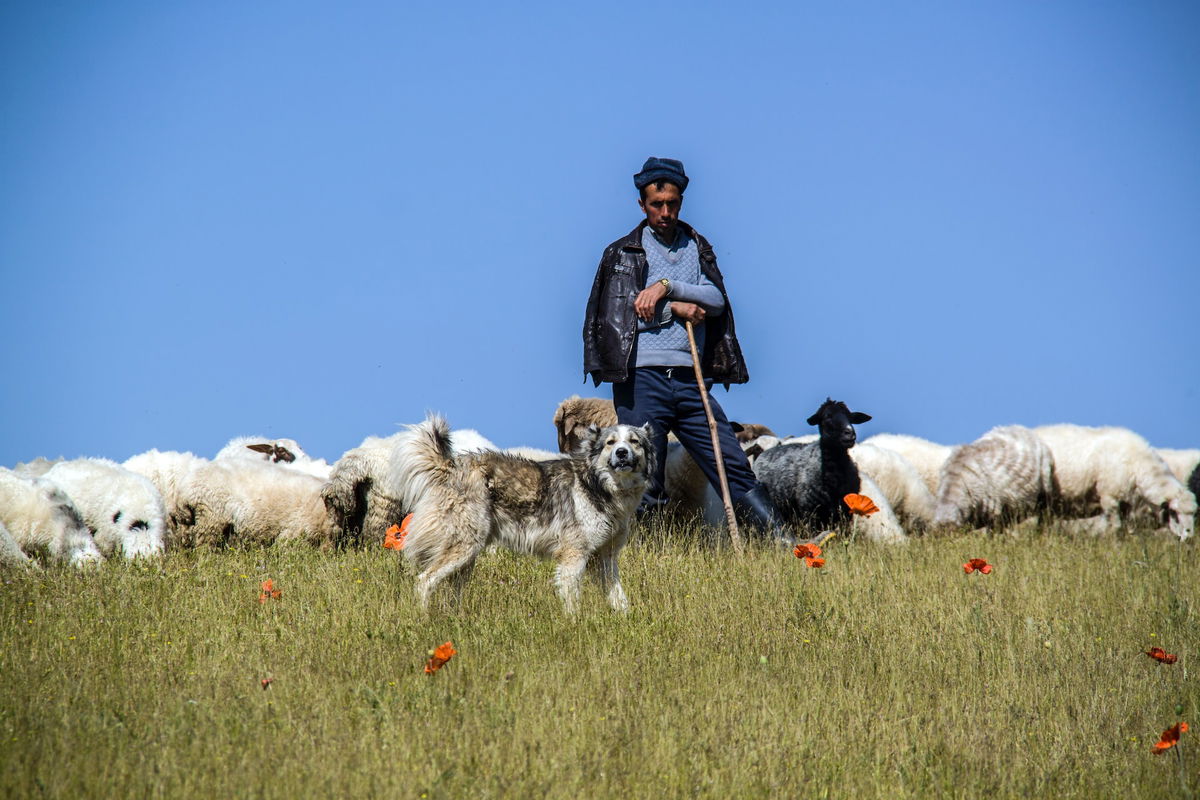
The adept workaholic nature, striking versatility, and high trainability made Aussies a popular dog breed in US ranches and sheep farms.
Australian Shepherds were continuously developed by the US cattlemen, who were keen to preserve and improve on the dog’s intelligence, versatility, and herding instincts.
The American Kennel Club (AKC) recognized Australian Shepherds on September 1st, 1991, and on New Year’s Day in 1993, the Aussies were categorized in the herding group by the AKC.
5 Fascinating Facts About Australian Shepherds
1. Aussies are not Natives to Australia
Despite their suggestive name, Aussies were not bred in Australia! These herding dogs hail from the Basque County of the Pyrenees mountains overlapping the border of France and Spain.
Basque stockmen migrated with their herding dogs to Australia and then to the west of America.
The US livestock farmers assumed the herding dogs came from Australia, so they named them ‘Australian Shepherds’.
2. Aussies have many former names
Before their formal recognition as Australian Shepherds, these herding canines were known by several names.
Some of their previous unofficial names include; Spanish Shepherds, Pastor Dogs, California Shepherds, Blue Heelers, and Mexican Shepherds.
3. Australian Shepherds are heavy shedders
The thick double coat and long fur covering the Australian Shepherds come with the responsibility of dealing with shedding.
Aussies shed their fur all year round and they experience heavy shedding during seasonal changes in Fall and Spring.
4. Aussies are versatile working dogs
Australian Shepherds are renowned for their excellent herding abilities, but their talents extend beyond protecting and herding livestock in ranches.
These double-coated dogs have worked alongside cowboys, herding cattle, sheep, and other livestock with remarkable precision.
Aussies have also excelled in rodeo roles during the early years of film productions in dozens of movies and competitions.
Their agility, impressive brainpower, and willingness to get the job done have made them easy to train for various roles including agility training, search and rescue operations, and therapy services.
5. An Australian Shepherd became a Frisbee Winner in the 1974
Eldon McIntire’s Aussie named Hyper Hank was the talk of the town in 1970s for his impressive skills in catching frisbees.
Hyper Hank was super talented in frisbee competitions that they staged a performance in the Super Bowl and got a chance to play with Jimmy Carter’s family in the White House.
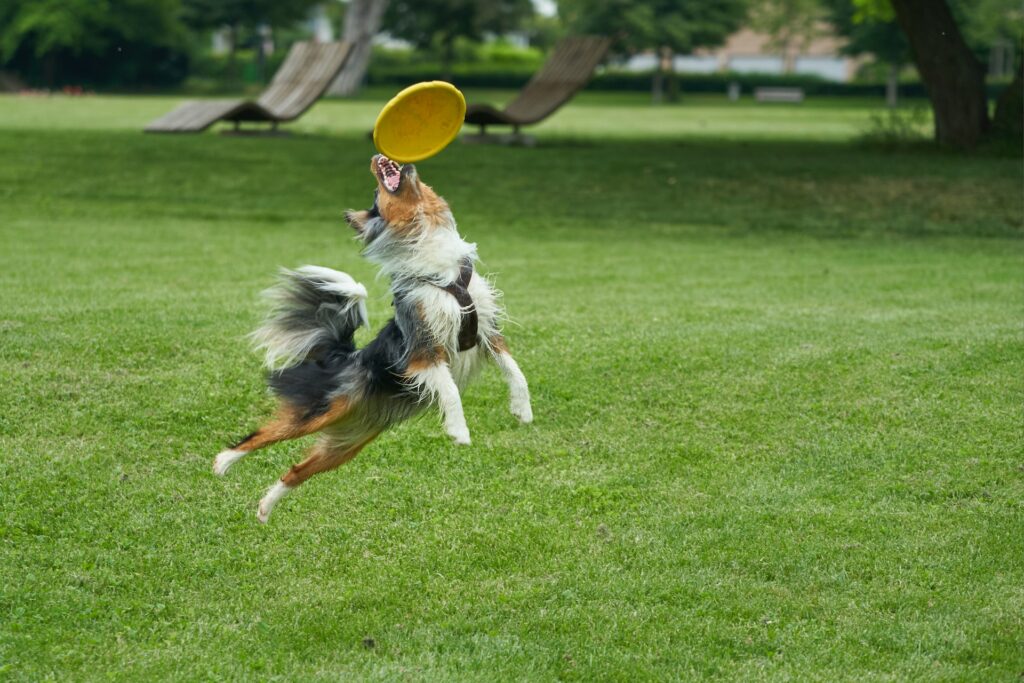
Eldon and his disc dog formed a formidable tag team that won competitions across America and dominated the competition for many years.
Australian Shepherd Puppies
Aussie puppies are nothing short of delightful and charming, thanks to their fluffy coat and eager-to-learn personality.
These puppies demand great commitment from their caregivers because of their inborn instincts to herd and protect livestock.
If you have an Aussie puppy, plan to offer them something to do from a young age, failure to which they can pick up destructive activities to fulfill their desires to work.
Australian Shepherds are both energetic and highly trainable, so you can enroll your young Aussie in a puppy class for early socialization and basic life skills training.
Australian Shepherd Physical Characteristics
1. Size and Weight Range
A fully grown male Australian Shepherd can reach a shoulder height of between 20 to 23 inches while a female averages 18 to 21 inches.
In terms of weight, Australian Shepherds are big dogs and their male versions can tip the scale to 50 to 65 pounds while their female counterparts weigh an average of 40 to 55 pounds.
2. Coat colors and texture
One of the biggest highlights of Australian Shepherds is their fluffy coat. They come in various colors and patterns, including red merle, blue merle, red, and black.
These colors can appear in combination with white markings and/or (tan) copper points, creating a spectacular and characteristic appearance.
The markings typically appear on specific areas including the chest, under the muzzle, and on the forehead as a blaze.
Australian Shepherds have a double-layered medium/long coat comprising of a dense, weather-resistant outer coat and a soft-textured insulating undercoat.
This well-designed coat provides Aussies with enough protection against harsh weather conditions that were rampant in cattle ranches during their historic working roles.
3. Distinctive features
Alongside the elegant coat, the other distinctive feature of Australian Shepherds is their eyes. Their almond-shaped eyes can be amber, brown, haze, blue, or a combination of those colors.
Aussies are one of the few dog breeds that can have two differently colored eyes, a condition known as heterochromia – a lack of melanin pigment in one eye.
Some rare Australian Shepherds can even show more than one color in a single eye, and a different combination on the other eye.
Australian Shepherd Temperament and Personality
Australian Shepherd dogs have a vibrant temperament that matches with their impressive mental acumen and supreme adaptability.
Aussies also have a dynamic personality which makes them a favorable dog choice among many canine enthusiasts.
Australian Shepherds were born to protect livestock and herd farm animals, so they can be bursting with energy which can be overwhelming for novice dog owners.
These dogs have an inherent need to work, play, and exercise which means they need an owner who can channel their high energy in positive channels.
Australian Shepherds are highly sensitive animals and they tend to form unbreakable bonds with their human caregivers.
Families with kids can have an Australian Shepherd as a household pet, but they need to watch out for the breed’s tendency to dominate and protect, which can be overwhelming for toddlers.
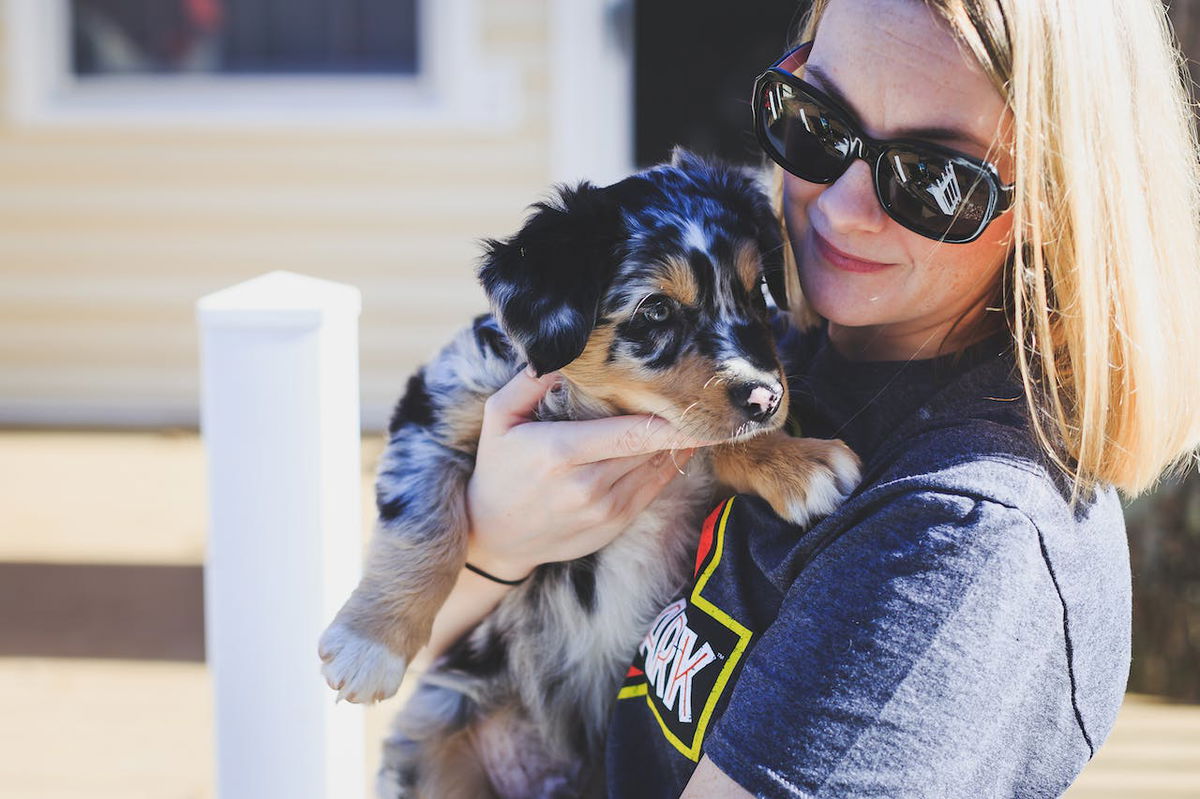
If your work schedule puts you away from home, you need to understand that Aussies are not bred to stay alone for extended periods.
Leaving your dog alone without constructive engagement can drive them into boredom and depression which can manifest in destructive habits.
Many dog owners have raised questions about how Aussies interact with other household pets, owing to their high energy drive.
The good news is that Australian Shepherds can get along with other dogs, provided they are introduced to each other at an early stage.
Australian Shepherd Intelligence
Being ferocious working dogs, Australian Shepherds have highly developed brains with impressive intelligence and decision-making capabilities.
According to ‘The Intelligence of Dogs‘, by Renowned Canine Psychologist Dr. Stanley Coren; Aussies emerged as the 42nd smartest breed out of 138 dog breeds tested for Canine IQ.
The highly intelligent nature of Aussies means that they are quick learners with the ability to pick up training with few repetitions.
This double-edged sword means that Aussies can also pick up destructive habits like excessive chewing if not properly trained.
Australian Shepherd Health and Lifespan
Average Lifespan
The average life expectancy of an Australian Shepherd is in the region of 12 – 15 years. But, with proper care and regular vet visits, many Aussies can live for many years without major issues.
A good example is Bluey, an Australian Shepherd dog who lived for a remarkable 29 years and 5 months from 1910 to 1939.
Common health issues and genetic disorders
Australian Shepherds are largely healthy dogs, but they are predisposed to certain health issues and genetic disorders which you need to be wary of.
The following are some of the conditions that can affect Aussies:
- Moderate to severe allergies
- Hip dysplasia
- Elbow dysplasia
- Progressive Retinal Atrophy (PRA)
- Multi-Drug Resistance (MDR1)
- Cataracts
- Epilepsy
- Collie Eye Anomaly
- Caners, especially Lymphoma, and hemangiosarcoma
Preventative measures for good health
When getting an Aussie from a breeder, we recommend you ask for all health clearance documentation applicable in your state before making a purchase.
Reputable breeders usually prioritize the wellness of a dog, and this may reduce the likelihood of their puppies suffering hereditary conditions from poor genes.
Another preventive measure for good health is taking your Australian Shepherd for regular physical and medical examinations at the vet.
Always maintain consistent communication with your vet and inform them about any abnormal symptoms or unusual behavior.
In addition to providing your Aussie with a high-quality dog food diet, make sure to keep up with routine preventive care such as vaccination and parasite control.
Australian Shepherd and Allergies
Aussies are moderate to heavy shedders. They experience a year-round hair fall pattern with heavy shedding expected during seasonal changes in Fall and Spring.
This means that allergy-prone individuals can have a negative reaction to pet dander and pet protein from urine and saliva.
To prevent hypersensitivities, we strongly suggest that you groom your Australian Shepherd regularly and keep their coats in top condition to prevent the overflow of pet allergens.
Australian Shepherd Grooming Needs
Coat Maintenance
The luxurious feathery coat of Australian Shepherds demands regular grooming to keep them looking soft and shiny.
Aussies may not require detailed or meticulous grooming like other dog breeds such as Yorkshire Terriers and Poodles, but owners need to know the key areas of focus.
The fluffy Aussie coat can attract dirt and debris, making it essential to regularly brush them at least twice or thrice a week.
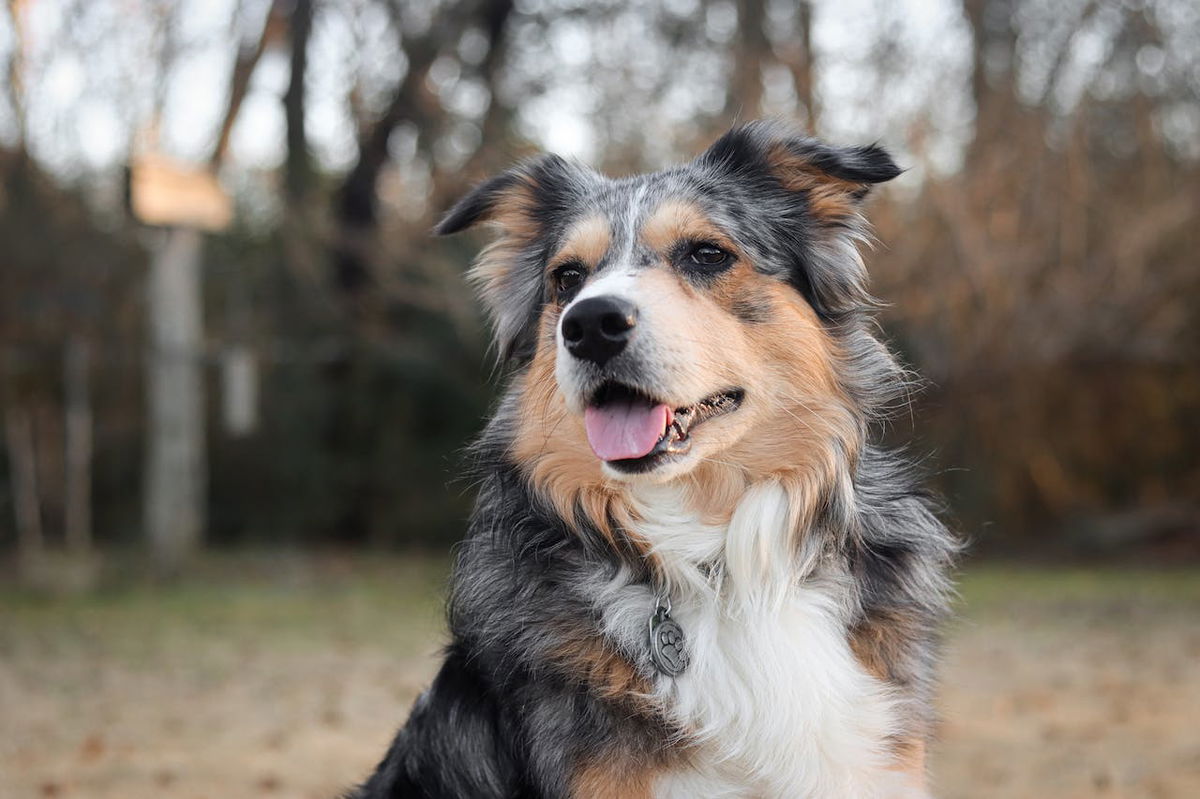
Pin brushes or slicker brushes are best suited for the Aussie coat to prevent matting and tangling along the areas with dense fur such as behind the legs.
Daily brushing is recommended during the heavy shedding months, which occurs twice a year, to manage dead hair.
Australian Shepherds don’t require too many baths unless needed. You can wash them using canine shampoo once in a couple of months or spot-clean certain areas to remove persistent dirt.
Overbathing can strip off natural oils from the dog’s skin, leading to flakiness and an overall dull appearance.
Nail Trimming
Alongside coat maintenance, other grooming essentials should not be overlooked. Nail trims are essential to keep the dog’s nails at a manageable length and to prevent discomfort while walking.
Ear cleaning
Monitor your dog’s ears and clean them using a soft cotton ball and an ear cleaner with a veterinary certification.
Dental Care
Aussies’ teeth should ideally be brushed every day using canine-specific toothpaste and a soft toothbrush to maintain good oral health.
Dental care also prevents potential complications such as periodontal diseases from arising. You can also incorporate dental chews to prevent tartar buildup and give your dog a good breath.
Australian Shepherd Exercise and Activity Levels
Daily Activity needs
Australian Shepherds are highly energetic dogs with an inherent drive to work. Adult Aussies can thrive when offered moderate to intensive exercise for about 2 hours every day.
The exercise period can vary depending on various factors including gender, age, and health conditions.
Suitable activities and games for Australian Shepherds
A good exercise regimen for Australian Shepherds can include the following activities and games:
- Walking and jogging
- Vigorous running
- Hiking
- Playing Fetch
- Agility training
- Obstacle courses
- Swimming
- Puzzle games
- Interactive games with other dogs
Importance of mental stimulation
Aussies can benefit from mental stimulation in many ways. Brain games are known to improve the dog’s problem-solving and decision-making skills, which makes them better companions.
They also prevent the dog from sliding into emotional distress and anxiety which can cause them to initiate bad habits to cope with the worrying situations.
Consistent brain games help older Aussies slow down mental decline and prevent them from tending toward dementia.
Australian Shepherd Training and Socialization
Australian Shepherds are super intelligent dog breeds with an eager-to-please attitude, which makes them highly receptive to training.
Training your Aussie can be a rewarding endeavor, but it requires lots of patience and consistency since the breed can be dominant at times.
Positive reinforcement methods have been proven to work effectively when training Aussies on command, obedience, or working roles.
For the best training results, Aussie parents are advised to alter their training programs and offer new tricks that can challenge their dog’s mental power.
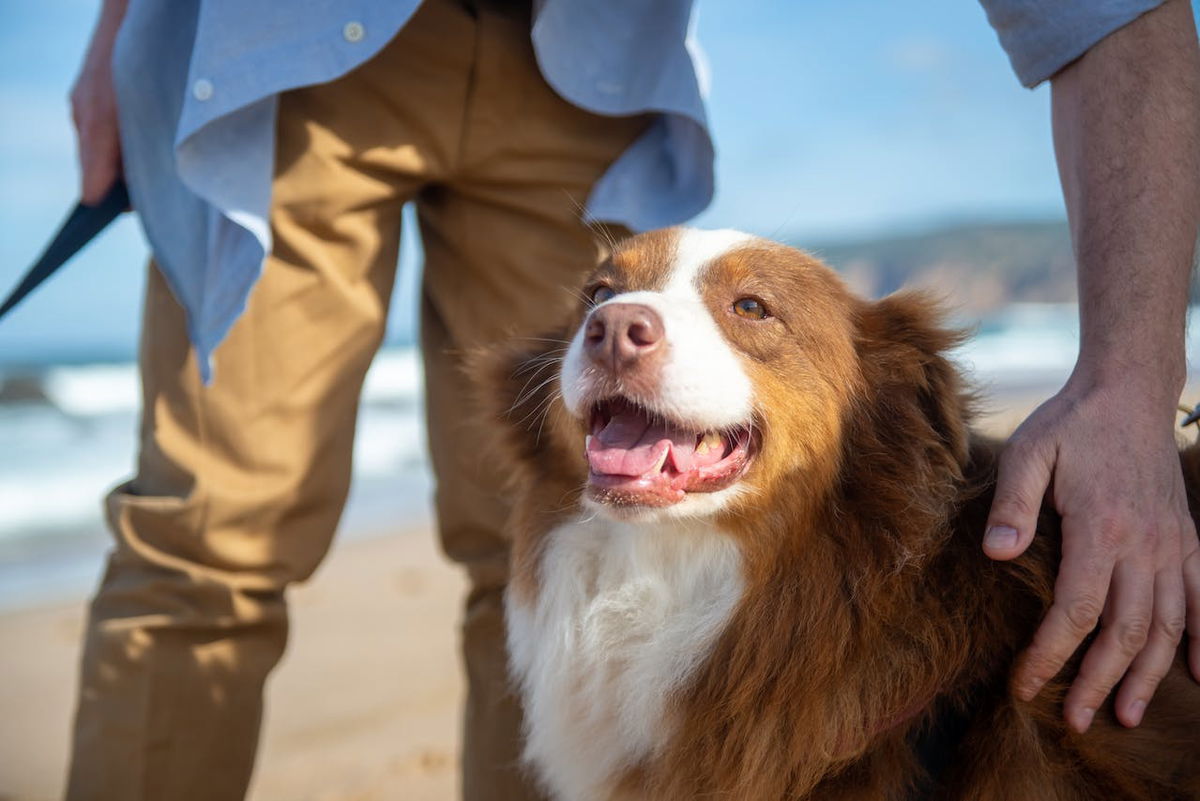
Australian Shepherds tend to bark a lot, because of their history as herding dogs and watchdogs. They will certainly get vocal to alert their owner about unusual activities or situations.
While barking can be advantageous for people seeking watchdogs, it could also be problematic for people with close neighbors.
Luckily enough, you can teach your Australian Shepherd the ‘quiet’ command to slow down their barking tendencies.
Australian Shepherds need early socialization with different people, environments, and settings right from their puppyhood days.
These dogs are known for their inherent drive to wander and explore new environments, stemming from their herding instincts.
Providing sufficient social training and exposure to different environments can adjust your dog’s expectations and teach them how to behave in certain places.
Australian Shepherd Living Conditions
Aussies are robust dogs with high energy drive and the spirit to explore. This means they can thrive in houses that provide ample space for exploration and stimulation.
Apartment dwellers can still own Aussies, but they need to regularly take them to dog-friendly parks in addition to the daily evening strolls to keep them happy and satisfied.
During the winter, the dense double-layered Aussie coat serves them right to retain body heat and keep them warmed up.
In hotter months, you should strive to keep your dog shaded from the scorching sun since the coat does little to cool them down.
Australian Shepherd Diet and Nutrition
Providing adequate and high-quality nourishment to your Australian Shepherd is essential in keeping them healthy and increasing their life expectancy.
Aussies are highly energetic, meaning their dietary needs can be more demanding than some other dog breeds.
Australian Shepherd puppies need a high-quality dog food diet specifically formulated for their growth and development.
The fast metabolic rate of puppies means that they require more calories and nutrients than their adult counterparts.
Puppies should be fed small amounts of food throughout the day as opposed to offering one or two large meals.
In their adulthood, Australian Shepherds also have robust nourishment demands, thanks to their highly energetic bodies.
Mature Aussies can thrive on high-quality canine-specific food, both commercial and homemade, so long as they offer the right mix of nutrients.
Most Aussies are known for their profound love for food, meaning they can wheedle their owners for some extra treats alongside their main meals.
Always follow proper portion control based on your dog’s age, size, activity level, and health conditions. Treats should be offered in moderation and capped at a maximum of 10% of their diet.
Overfeeding your Aussie can cause them to gain extra weight and make them tend toward obesity, which can cause severe issues including chronic illnesses.
Remember to offer your Aussie a constant supply of clean drinking water to support their metabolism and overall well-being.
Australian Shepherd Pregnancy and Litter Size
Expectant Australian Shepherds have a gestation period of about 60 to 65 days with a small variation of minus/plus a few days depending on various factors.
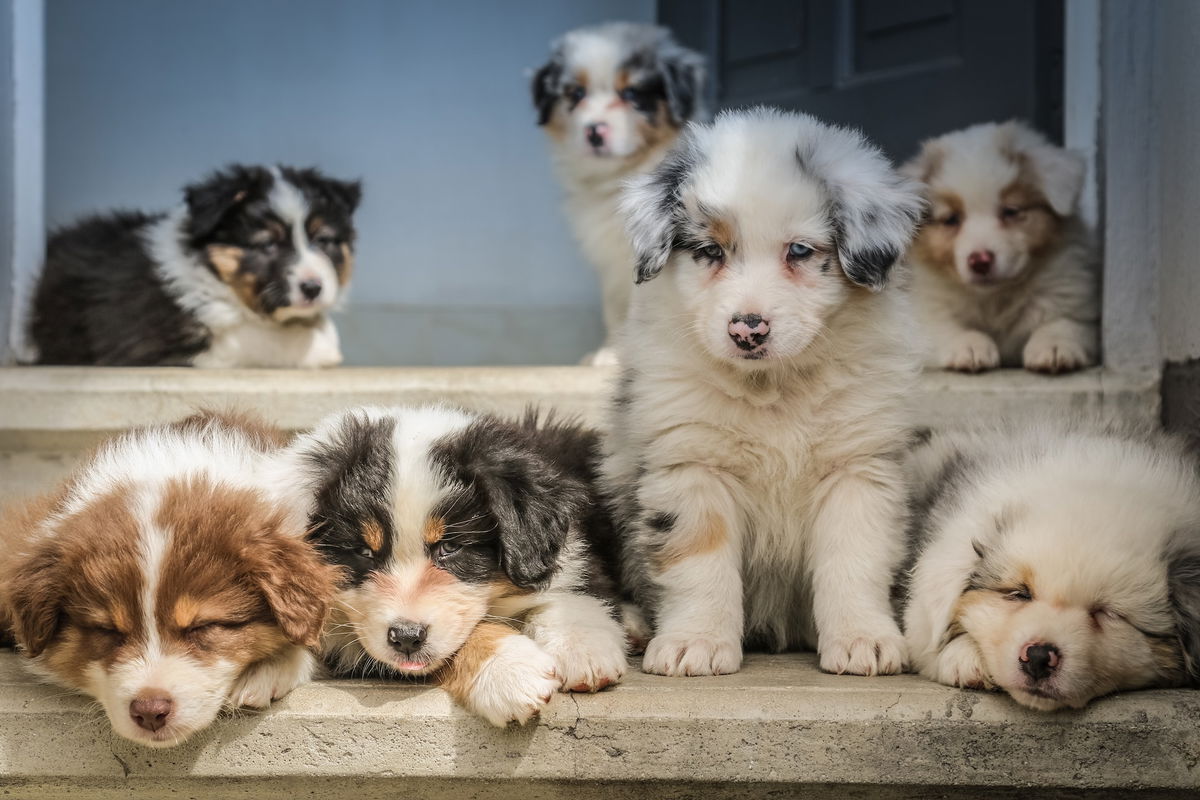
An average Aussie can give birth to 5 to 8 puppies in one litter. However, the litter size is dependent on several factors including the mother’s age, health conditions, and genetics.
Providing your dog with top-notch prenatal care can maximize their litter size and reduce the chances of stillbirth or other motherhood complications.
Conclusion
Australian Shepherds dog breeds have an instinctual herding trait which makes them willing to work and exercise more than other breeds.
The instinct to protect and lead farm animals can make modern-day Aussies nip on the heels of their owners and try to gather or herd children.
This behavior can be misunderstood as aggression by some people, but it occurs due to their strong shepherding instincts.
Training and socializing your Aussie from their puppyhood stage can help them shape good habits and become obedient members of your household.
Laura is the founder of Furs'n'Paws. She is a also a pet writer and expert with more than 20 years of experience of working with dogs and cats. She developed a very strong love for animals at a young age. Her passion led her to establish a thriving pet sitting and dog walking business in Dubai. As an expert in pet training, behavior, and nutrition, Laura is committed to helping pet owners and pet lovers by offering high-quality information on a wide range of topics.


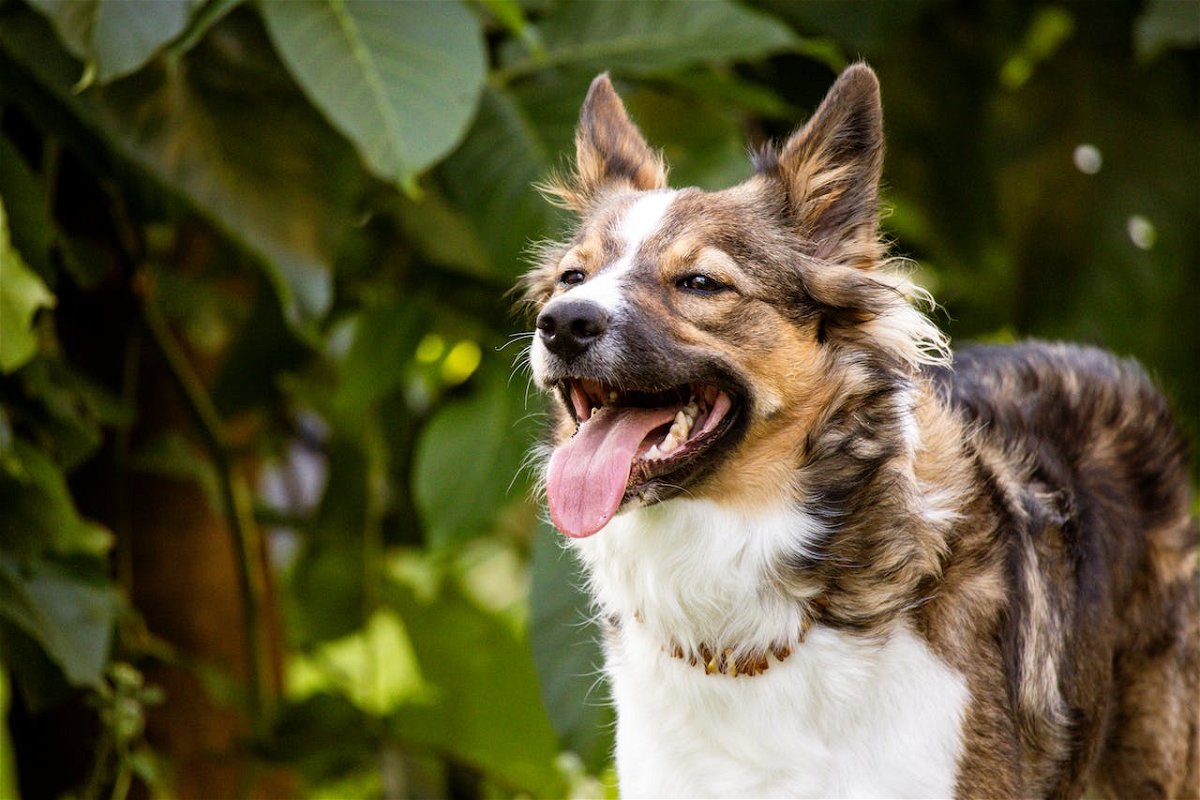
No responses yet